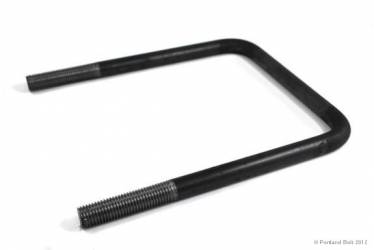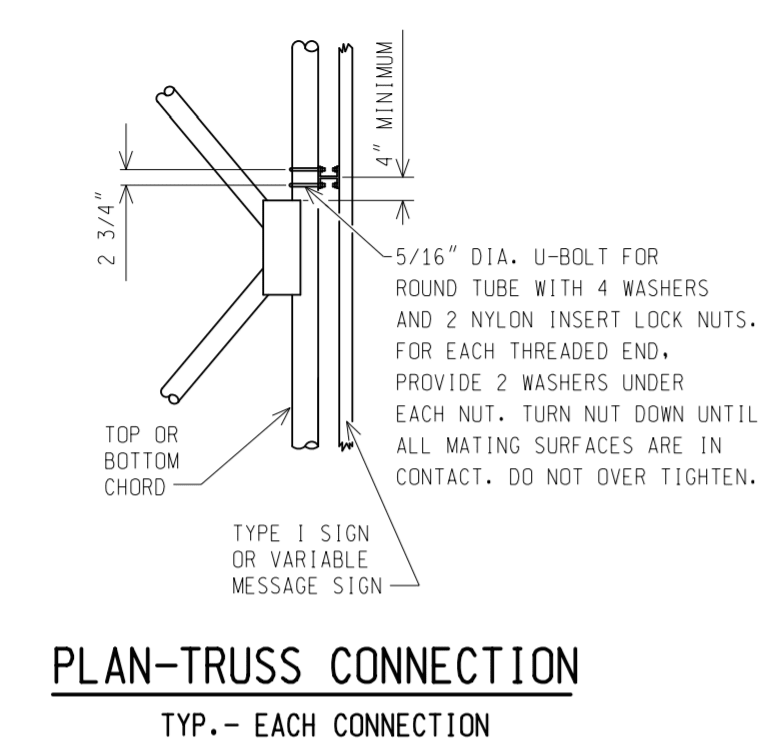Navigation
Install the app
How to install the app on iOS
Follow along with the video below to see how to install our site as a web app on your home screen.
Note: This feature may not be available in some browsers.
More options
Style variation
-
Congratulations JStephen on being selected by the Eng-Tips community for having the most helpful posts in the forums last week. Way to Go!
You are using an out of date browser. It may not display this or other websites correctly.
You should upgrade or use an alternative browser.
You should upgrade or use an alternative browser.
Square U-bolts 1
- Thread starter bones206
- Start date
- Status
- Not open for further replies.
I would imagine so, though it may depend on the method of bending. I imagine it's done in a similar fashion to L- and J- anchor bolts, and those depend on the capacity in the deformed area. If anything I'd say the bend is probably a little stronger due to the cold working (assuming they're bent cold), though the failure mode won't be ductile.
- Thread starter
- #3
To clarify, I'm asking in the context of steel connections. I want to attach something to an existing HSS truss with square u-bolts, but I was struggling to define a capacity. In the past I've used round u-bolts from Anvil, which publishes load capacities, but I can't find anything similar for square u-bolts.
- Thread starter
- #4
May just be a matter of searching. McMaster Carr has some 5/8" square u-bolts with a rated capacity, but they don't indicate what the steel spec is.
- Thread starter
- #6
Thanks pham, I had looked at those McMasters earlier and missed the load rating. But that alone doesn't give me enough confidence to use in a structural application where I need a well-defined factor of safety. I also need both a tension and shear capacity.
I did find a recent Iowa State study for rounded U-bolts, which tells me there is still work to be done to codify the use of structural u-bolts. I'll have to come up with another connection design for now. The problem is I can't weld or field drill...
I did find a recent Iowa State study for rounded U-bolts, which tells me there is still work to be done to codify the use of structural u-bolts. I'll have to come up with another connection design for now. The problem is I can't weld or field drill...
Have you tried contacting Portland Bolt? They have a responsive and knowledgable staff. Since they'll custom manufacture them, they should have some insight into strengths and safety factors.
This data has to be out there. Those things have been used in automotive applications for decades. I have a an old 1950's era trailer axle in my barn with these things on the leaf springs.
This data has to be out there. Those things have been used in automotive applications for decades. I have a an old 1950's era trailer axle in my barn with these things on the leaf springs.
- Thread starter
- #8
-
1
- #9
- Thread starter
- #10
- Thread starter
- #11
If it helps any:
I note the vertical square u-bolts holding my boat trailer frame to the axles don't bear any weight. The horizontal u-bolts holding the bunks to the cross members bear the boat's weight in shear. Weight bearing does not depend on friction from tension.
I note the vertical square u-bolts holding my boat trailer frame to the axles don't bear any weight. The horizontal u-bolts holding the bunks to the cross members bear the boat's weight in shear. Weight bearing does not depend on friction from tension.
Would Lindapter have anything that works for your application?
- Thread starter
- #15
- Status
- Not open for further replies.
Similar threads
- Question
- Replies
- 1
- Views
- 5K
- Replies
- 3
- Views
- 2K
- Replies
- 7
- Views
- 3K
- Replies
- 7
- Views
- 5K
- Replies
- 2
- Views
- 2K


